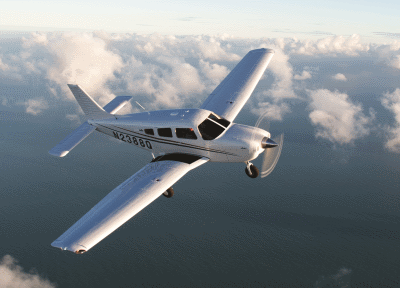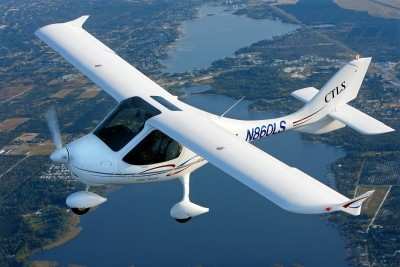Conditions Under Which A Private Pilot Can Ask For Gas Money Are Pretty Limited
There has been a lot of discussion over the past several years about pilots sharing expenses for a flight, particularly if they have posted any kind of notice on the Internet about where they are going and offering to share expenses with someone else for the trip. Now, the FAA has released an Advisory Circular (AC) outlining specifically when a pilot may ask a passenger for gas money.

According to the AC, private pilots operating under part 61 may not engage in common carriage unless they are operating in accordance with an Air Carrier Certificate or Operating Certificate issued under part 119. The AC offers guidance as to when that line is crossed.
A private pilot may not pay less than the pro rata share of the operating expenses of a flight with passengers, provided those expenses involve only fuel, oil, airport expenditures, or rental fees. A pilot exercising private pilot privileges who accepts any reimbursement that exceeds the pilot’s pro rata share of the operating expenses of a flight would be paying less than the pilot’s pro rata share, and thus would be violating the limits of the expense-sharing provision of § 61.113(c). Additionally, § 61.113(c) permits reimbursement of expenses only from the passengers on the flight. Essentially, you can't ask someone to pay for all the gas.
A pilot also has to be careful about how he or she lets people know about the flight. Private pilots who want to share expenses under § 61.113(c) must not “hold out” to the public or a segment of the public as being willing to furnish transportation to any person who wants it. That's where the Internet becomes involved. More on that later.
Compensation is defined as the receipt of anything of value that is contingent on the pilot operating the aircraft; i.e., but for the receipt of the compensation, the pilot would not have taken that flight. Compensation does not require a profit, profit motive, or the actual payment of funds. Reimbursement of expenses, accumulation of flight time, and good will in the form of expected future economic benefits can be considered compensation.
In assessing whether a pilot is operating consistently with the expense-sharing provision, the FAA considers whether the pilot has his or her own reason for traveling to the destination. When the pilot, not the passenger, chooses the destination, it suggests that the pilot is not simply transporting passengers for compensation. The common destination satisfies the common purpose test even if the pilot and the passengers have different business to conduct at the destination. For some time, the FAA has indicated that, in order for a common purpose to exist, the pilot must have his or her own personal need to fly to that destination, i.e., his or her own particular business to conduct at the destination. Therefore, when the pilot has no particular business to conduct at the destination or the flight is only for the purpose of transporting passengers, no common purpose exists. The common purpose test can be stated as “but for the receipt of compensation, the pilot would not have taken that
flight.”

It is important that private pilots who want to share expenses do not “hold out” to the public, or a segment of the public, as willing to furnish transportation to any person who wants it. When an operator meets all the elements of common carriage, he or she cannot operate under the expense-sharing exception of § 61.113(c) and, unless an exception applies, needs to hold a part 119 certificate and operate these flights under part 121 or 135. Common carriage is defined as (1) a holding out of a willingness (2) to transport persons or property (3) from place to place (4) for compensation or hire.14 When a private pilot wants to share expenses under § 61.113(c), three of the four elements of common carriage are already met; i.e., the pilot is transporting persons or property from place to place for compensation or hire. The remaining element is whether the pilot is “holding out a willingness” to do so.
“Holding out” is accomplished by any means that communicates to the public that a transportation service is indiscriminately available to the members of that segment of the public that it is designed to attract. There is no specific rule or criteria as to how holding out is achieved. Instead, holding out is determined by assessing the available facts of a specific situation. Advertising in any form raises the question of holding out.
Historically, pilots have been found to be holding out when advertising services via rolodex, brochures, newspapers, magazines, telephone directories, posters, and website/internet postings.
So you can still let your friends know you're flying somewhere, and ask them to pitch in for gas for the trip. The AC would also seem to allow a pilot to post a notice on an airport bulletin board, as that would be interpreted as a "limited audience". But read the AC to make that determination for yourself. It gives specifics about the use of the Internet, apps, email and other methods of "holding out".
In summary, Pilots may share operating expenses with passengers on a pro rata basis when those expenses involve only fuel, oil, airport expenditures, or rental fees. These exceptions are themselves further limited. In assessing whether an expense-sharing flight is properly conducted under the exception in § 61.113(c), the FAA considers whether the pilot and passengers have a common purpose and whether the pilot has held out as offering services to the public. The “common-purpose test” anticipates that the pilot and expense-sharing passengers share a “bona fide common purpose” for their travel and the pilot has chosen the destination. Communications with passengers for a common-purpose flight are restricted to a defined and limited audience to avoid the “holding out” element of common carriage.
(Source: FAA. Images from file)
FMI: AC
 ANN's Daily Aero-Term (04.26.24): DETRESFA (Distress Phrase)
ANN's Daily Aero-Term (04.26.24): DETRESFA (Distress Phrase) Aero-News: Quote of the Day (04.26.24)
Aero-News: Quote of the Day (04.26.24) ANN's Daily Aero-Term (04.27.24): Direct
ANN's Daily Aero-Term (04.27.24): Direct ANN's Daily Aero-Linx (04.27.24)
ANN's Daily Aero-Linx (04.27.24) Aero-News: Quote of the Day (04.27.24)
Aero-News: Quote of the Day (04.27.24)




